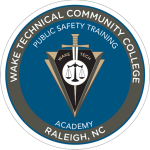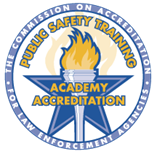 Wake Tech’s Public Safety Leadership Academy is offered at No Charge to to sworn personnel in NC Municipal, County, or State law enforcement agencies as identified by the Department of Justice’s Criminal Justice or Sheriffs’ Standards Divisions.
Wake Tech’s Public Safety Leadership Academy is offered at No Charge to to sworn personnel in NC Municipal, County, or State law enforcement agencies as identified by the Department of Justice’s Criminal Justice or Sheriffs’ Standards Divisions.
Certified Credible leadership II (CCL II) is the second leg of your comprehensive journey through leadership education. CCL II is designed to build on the curriculum of Phase I and raise participants level of organizational thought and team-building by focusing on theories and practices of organizational leaders from both private and public sectors who have made monumental changes within their organizations.
Your faculty and video segments from select instructors in CCL II illustrate several exemplary examples of organizational leadership success and introduce participants to methods and rationale behind these highly successful best practices. This course of instruction features segments from leadership giants John Maxwell, Tony Robbins, Howard Schultz, Jeff Canter, Sheriff Ray Nash, General Stanley Mc Chrystal and many more. The curriculum includes summaries of the best-selling books Start With Why: How Great Leaders Inspire, by Simon Sinek, Good to Great: Why Some Companies Make the Leap and Others Don’t, by Jim Collins, and It’s Our Ship: The No Nonsense Guide to Leadership, by Captain D. Michael Abrashoff.
Practices from experts in the field of leadership are infused within the CCL II
curriculum to enhance their relevance to law enforcement practices and organizational procedures. This combination gives rise to modules on Generations, Human Capital Management, Emotional Intelligence, Conflict Management, Proactive Communication, Cultural Sensitivity, Action-Centered Leadership, Legacy Leadership and Reflective Leadership.
Required Textbooks
- “The Founding Fathers On Leadership: Classic Teamwork In Changing Times” by Donald T. Phillips.
- “It’s Our Ship: The No-Nonsense Guide to Leadership” by Captain D. Michael Abrashoff.
- Start with the Why – This module requires a text. Please read “Start with Why: How Great Leaders Inspire Everyone to Take Action” by Simon Sinek.
- Understand the various motivators that influence employees from different Generations.
 Be able to discuss the importance of Self-awareness as it relate to leadership and influence.
Be able to discuss the importance of Self-awareness as it relate to leadership and influence.- Be able to describe the four (4) Conflict Management Maxims.
- Be able to define Stereotyping, Biases, Prejudice and Discrimination.
- Describe the Components of Legacy Leadership.
